Introduction to Blog Series
There has been a big shift towards the IT Managed Services model in recent years. One of the main reasons is because Managed Services are designed to be proactive, leading to more stable IT environments.
But what does a ‘good’ Managed Service offering look like? I’ve put this blog series together to help business leaders answer this question.
There are fundamentals to look out for in a good Managed Service package, and I will be dedicating a blog post to each of them. This week, I will be looking at Onboarding.
The Importance of Onboarding
If a potential customer asks Circle Cloud for a quotation for one of our Managed Services, we often get the same response: Onboarding? What’s that for? Can anything be done about the cost?
The reason for this is because we’ve not yet had chance to explain to them what is involved. There are a couple of common perceptions we see amongst customers when it comes to assumptions around onboarding. One is that it’s almost unnecessary, and they believe that they can start logging tickets as soon as the contract is signed. Another is that onboarding is as straightforward as hooking a few tools into your systems. The thing is, why would a potential customer think any differently? They aren’t IT experts. That’s why it is the job of the IT Managed Service Provider to clearly communicate what the onboarding process entails and what the key milestones are. If the service they’re offering is clearly defined, this should be easy for them to do, as most of it will be documented.
To give you an idea of what a good Managed Service Onboarding Procedure should look like, I have used Circle Cloud’s Microsoft 365 Managed Service onboarding procedure as an example. You can see what’s included in our M365 Managed Service Plans here. What you’ll notice is how well-structured our onboarding procedure is, which is the direct result of having clearly defined services in the first place.
An Example of a Good Onboarding Procedure
Circle Cloud have a 5-step onboarding procedure, the stages of which are built into our service management tool. When a new customer signs with Circle Cloud, a project is initiated, with the steps for each phase creating a ticket to ensure the process is followed thoroughly and in the correct order. To provide an overview of how this works, screenshots have been taken from our internal service management tool that provide the headers for each stage. The stages reference specific internal technical documentation that is used to perform the tasks. Screen shots have been taken from such documentation to provide an idea of what’s entailed.
Phase 1- The information gathering phase
Once the contract has been signed, a Circle Cloud agent will arrange an information gathering call with the designated customer contact. On this call, we will provide the customer with an overview of a form that needs to be completed and returned to Circle Cloud. We will also agree milestone deadlines.
The form requires the input of items such as users, licenses, role profiles, mobile policy config and any antivirus exceptions. If you don’t understand what some of this stuff means, our Managed Services Team are available to guide you.
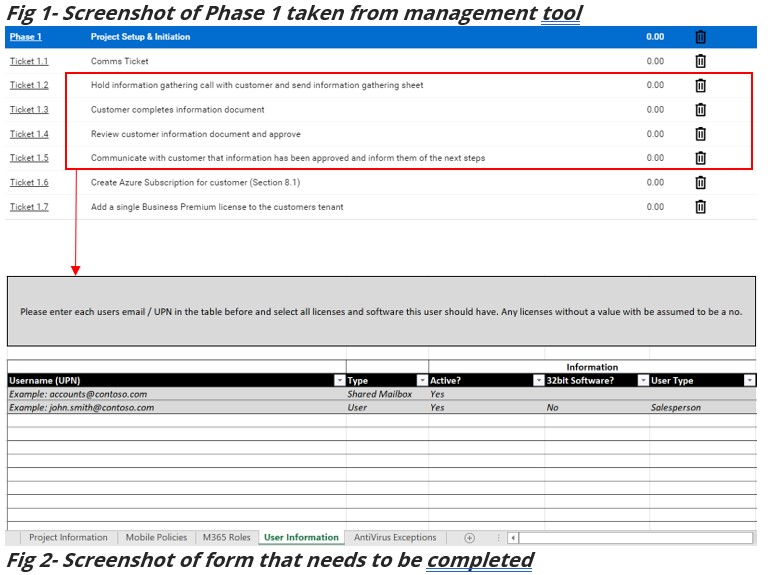
Phase 2- Pre-deployment configuration
Whilst Circle Cloud are waiting for the information to be returned from phase 1, the Circle Cloud Managed Service team configure items such as Azure AD Groups, Conditional Access policies and Compliance Policies. These are fundamental elements in the delivery of our Microsoft 365 Managed Services.

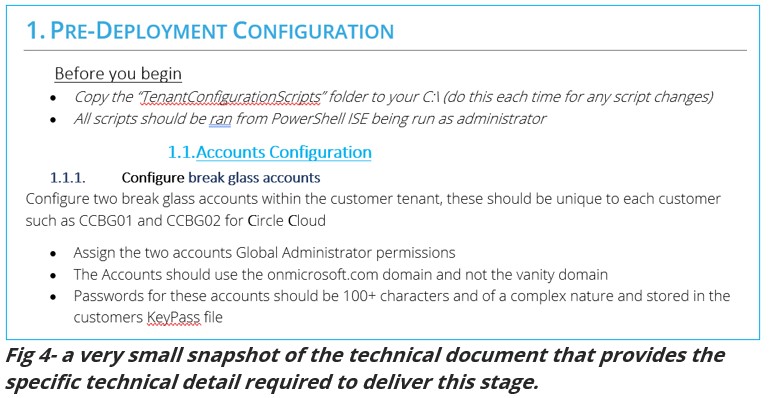
Phase 3- Setting up the Tenant
This is the point in the onboarding project where we carry out the configuration once we have received the information from phase 1. It includes items such as licensing the users correctly, applying tenant branding and configuring Autopilot.
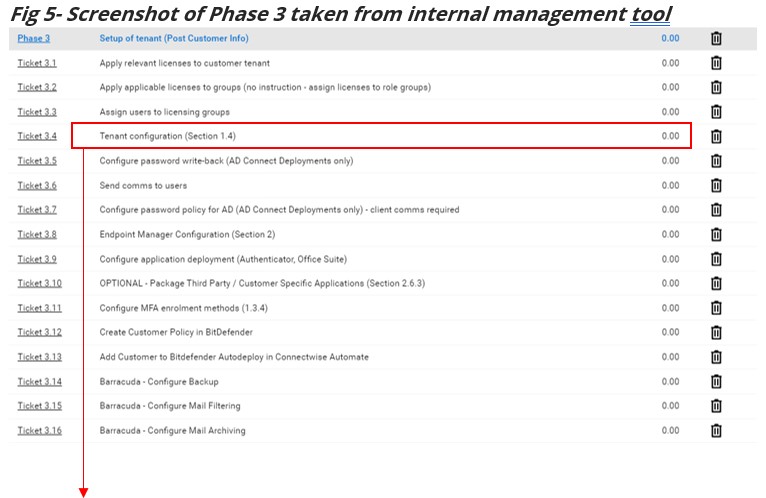
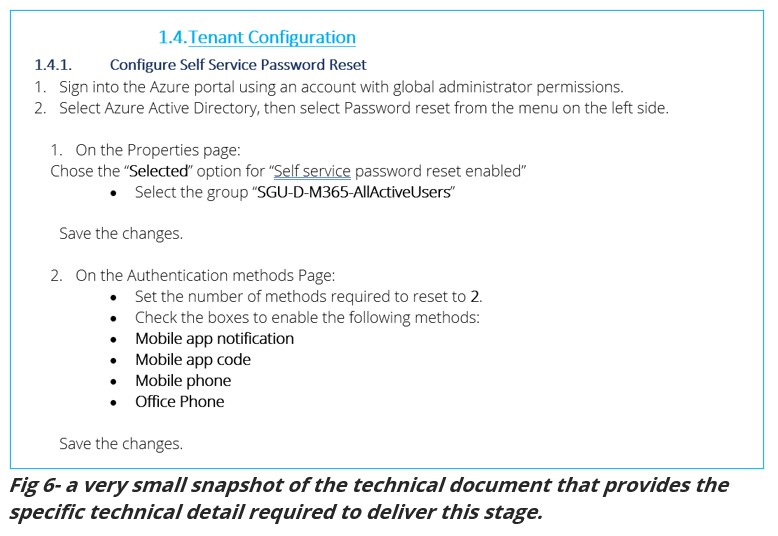
Phase 4- Device Onboarding
This is when Circle Cloud send instructions to supported users on how to onboard their mobile or windows devices. Circle Cloud closely review this part of the process, ensuring device compliance meets the standards that we’ve set. If there are any non-compliances, a member of our team will contact the users involved to resolve the problem and ensure compliance. Once all compliance standards have been met, we will arrange another meeting prior to going live for Conditional Access.
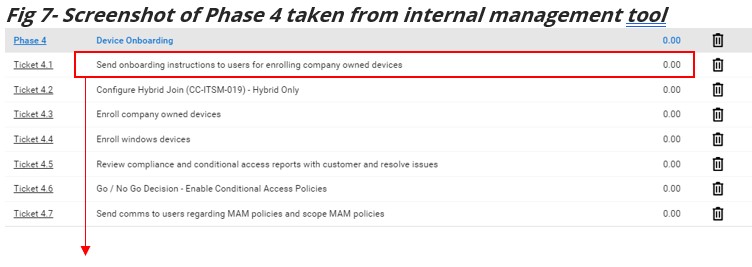
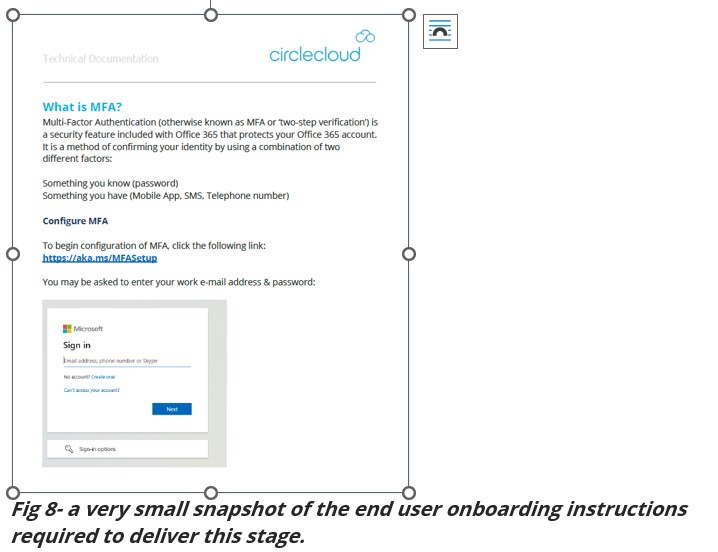
Phase 5- Enable Conditional Access
This is the phase where a Circle Cloud agent will activate any Conditional Access policies.

What’s Next?
So, this is the end of my 7 part blog series on what to look out for when choosing an IT Managed Service Provider, I hope you’ve found it useful.
If you missed some of the earlier blogs, here is a link to the first one- you can make your way back through from there.
I appreciate there are some areas that I couldn’t cover in much detail, just because of how big the topic is. That said, I will be looking to cover these areas in a future blog series which will be released in the coming months. Keep an eye out on our website and social media pages for that.
In the meantime, if there is anything you would like to discuss in more detail, please get in touch. Alternatively, if you would like a quick quote without having to speak to anybody, you can do that here.













